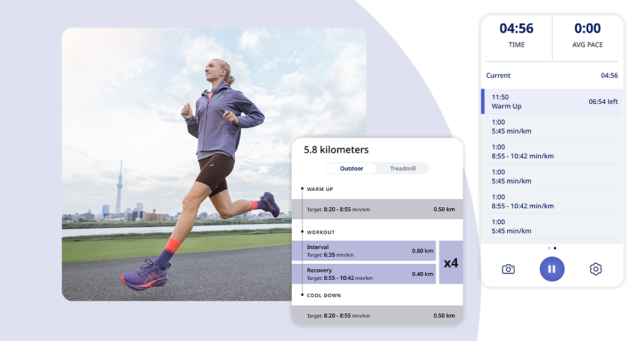If you’re a runner, chances are you’ve rolled an ankle at some point. Maybe more than once. Most of the time, you can walk it off. But as most runners know, it just takes one misstep to end up with a sprained ankle.
A sprained ankle occurs when one or more of the ligaments surrounding the ankle joint become stretched or torn. The most common type of ankle sprain is an inversion sprain when the foot rolls inward and the ankle rolls outward. This can result in a sprain of one of the ligaments on the outside of the ankle. How bad is it? That depends.
Not all ankle sprains are equal in severity
They come in varying degrees of “bad,” from grade 1 to 3. A grade 1 sprain is minor, resulting in microtears of the collagen fibers that help stabilize the ankle leaving you with mild pain, tenderness, and possibly a slight limp. You can usually walk on this type of sprain, but may not want to push activity. A grade 2 sprain results in complete tears of some of the collagen fibers in the ligament but not a full or complete rupture of the ligament. There will be moderate swelling, pain contributing to instability, and reduced range of motion with this type of sprain. You may need to temporarily immobilize the ankle and see a physical therapist.
Lastly, a grade 3 sprain is a complete tear or rupture of the ligament and will most certainly leave you with swelling, weakness, and pain, requiring medical attention and possibly surgery. Let’s not go there if we don’t have to.
If you suspect a minor sprain, you can start with these initial exercises at home. But if pain or swelling prevents you from being able to stand, walk, or do any of these exercises pain-free, you’ll know pretty quickly that you may need the help of a specialist.
At-home treatment for a sprained ankle
- Rest, ice, elevate. First thing to do: Reduce your activity level and time spent on your feet, elevate your ankle above heart level, and wrap some ice around it as soon as you can. Apply ice for about 15 minutes 3x/day for the first couple of days. If there is no swelling at all and minimal pain you can skip this step.
- Ankle alphabets. To prevent loss of range of motion and continue to gently activate the muscles without putting too much weight through the foot, elevate your injured ankle and write the alphabet with your whole foot (not your toes), moving only from the ankle down to spell each letter.
- Seated-to-standing heel raises. Begin with seated heel raises. While sitting in a chair, feet flat on the floor, slowly lift heels off ground so you are pressing gently through the toes. Slowly, with control, lower back down. Repeat 10 reps. If you’re completely pain-free, try a standing heel raise. Slowly go up on both toes, then slowly lower down. Repeat 10 times. Do not do either of these if there is pain.
- Single leg balance. When pain and swelling are minimal, try simply balancing on the injured side’s foot for 30-60 seconds. If you feel wobbly, begin with 3 attempts at 10 seconds. Gradually try and increase the time to 60 seconds.
Read more: How to avoid common running injuries
Please note: This blog is not intended to be a substitute for professional medical advice, diagnosis, or treatment. Always seek the advice of your physician or other qualified health provider with any questions you may have regarding a medical condition






